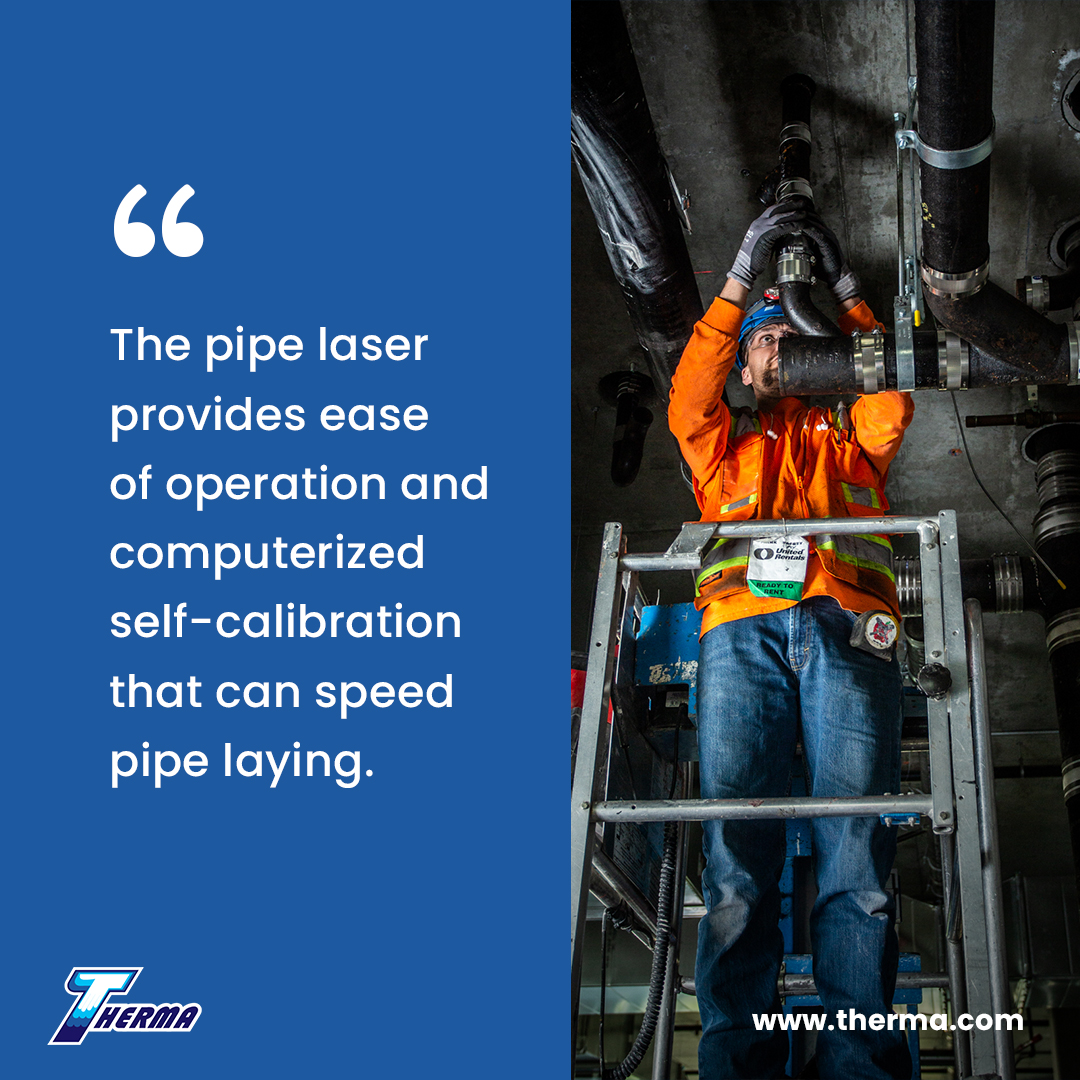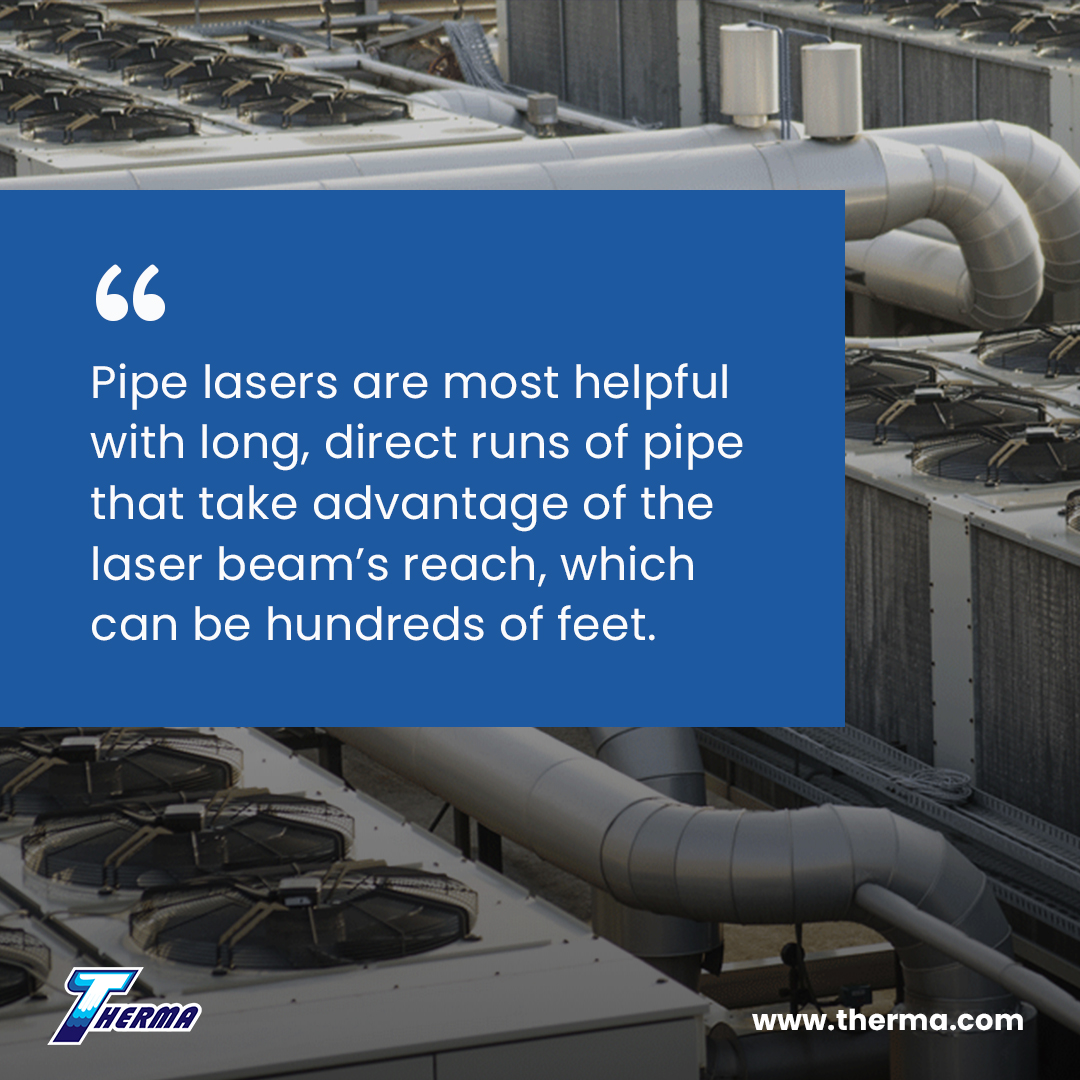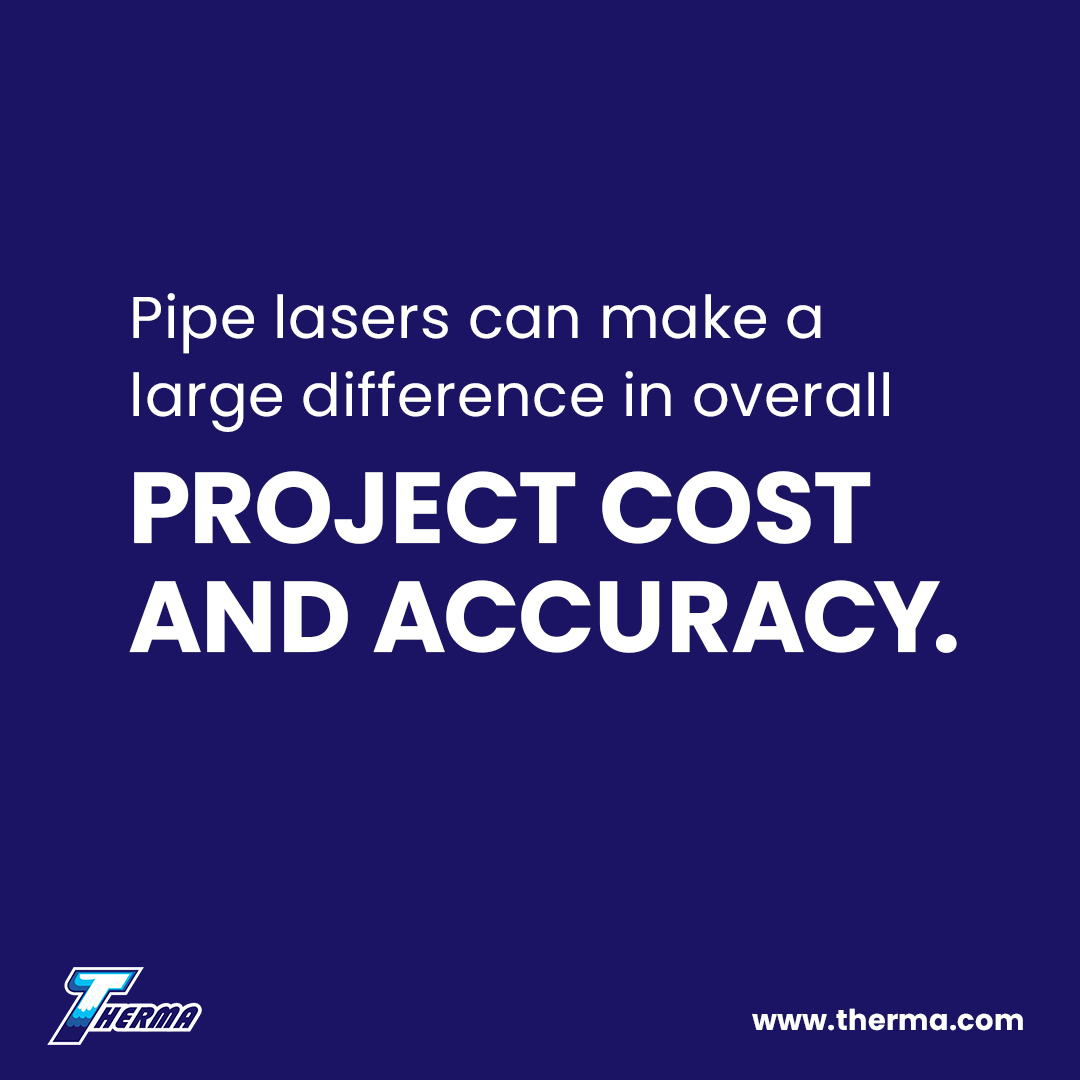To understand pipe lasers, a quick review of pipe grades will help. Grades in general help manage liquid flow on roofs, throughout public and private lands, and in piping. Though only a few percent of grade is generally sufficient for the purpose, piping requirements vary, and consistent grade throughout a run of pipe helps ensure steady liquid flow and prevention of blockages.
Measuring Downhill Flow the Old-Fashioned Way
Basic surveying techniques are used to measure land grades (rise or fall divided by run), and similar techniques can be used to measure the grade in, for example, a sewer pipe from a building. The waste needs to run downhill to the city sewer, and using grade stakes on the pipe just as they would be used to measure land grade can ensure that sewage will flow downhill. It does involve a lot of measurements and calculations, though, and a professional surveyor’s laser level with measurement skill to match is needed.
Pipe Laser Measurement Automation

Pipe laser equipment makes short work of grade calculations in sewer, wastewater and other linear pipe runs. Just as the laser level has made surveying simpler, so the pipe laser provides ease of operation and computerized self-calibration that can speed pipe laying.
Pipe lasers substitute physics for your manual geometric calculations, directly determining your pipe grade and helping you to handle all the tricks and exceptions that arise when you are installing sewer pipe and other lines.
Manual Measurement Is Detail-Oriented
Standard pipe grade setting involves determining the length of pipe, the depth to the invert and details such as any protrusion into manholes. Ensuring you have accurate and appropriate numbers, you can calculate the change in depth of the pipe invert over the length of the pipe and derive a grade percentage from that.
Quick Pipeline Construction with Quick Grade Verification

Pipe lasers are most helpful with long, direct runs of pipe that take advantage of the laser beam’s reach, which can be hundreds of feet. A simple sewer line to the street can be quickly measured, but where the pipe laser excels is in laying of the street pipe, providing reliable measurements quickly so that construction can proceed from manhole to manhole or along an extended run of pipe without significant measurement delays.
Laser and Target Location
With pipe laser equipment, the main unit is placed in the pipe on the invert. A simple target is placed at the other end of the pipe, and the self-calibrating, self-leveling, automatic pipe laser with radio remote control ensures that the pipe is being laid correctly.
The unit does need to be placed in the pipe invert (bottom) for easiest measurement, but there are options. Manhole-based supports and on-pipe brackets can help, and some construction professionals have developed methods for lowering the pipe level and target on strings for quick measurements without entering the trench.
Advances in Pipe Laser Design

The pipe laser unit is designed to fit in small spaces, some as limited as a 4-inch diameter, and operate under wet conditions, often by remote control, making it a perfect specialized tool.
If you have used early pipe laser equipment, there are a lot of important changes that make them even simpler to use. This equipment has advanced to the point where it is self-leveling — you simply place it in the pipe within a few degrees of level and it handles the rest. A radio-based remote provides direct control of the equipment from the far end and of powerful lasers similar to those used in survey equipment, laser levels and instant ranging and measuring devices.
Pipe Lasers Save Time and Add Accuracy on Specific Jobs
Pipe lasers are designed to help with specific pipe installation challenges, including long linear runs of supply or waste pipe. They don’t eliminate the need for skilled personnel to ensure that the overall installation is true and correct, but they can make a large difference in overall project costs and accuracy and can let pipe installation personnel perform their own measurements easily on smaller projects.
By Dave Maddox
Dave is a technical consultant and freelance writer with experience in control systems and information technology.
Sources:
- http://www.newenglandlaser.com/index.php?n=how_to_use_a_pipe_laser
- https://www.youtube.com/watch?v=2qwL6LxJ2tQ (Topcon TP-L4 Pipe Laser)
- https://www.youtube.com/watch?v=-wSrH0BIa_E (How to install underground pipes using a laser)
- http://rentals.leica-geosystems.com/support/60780F2B-5056-8236-9A036ABE0A009E9F.pdf







